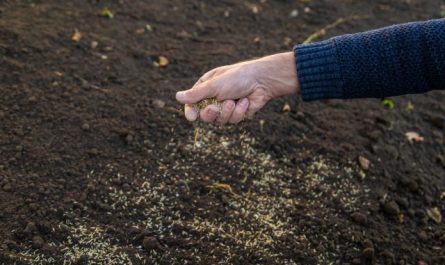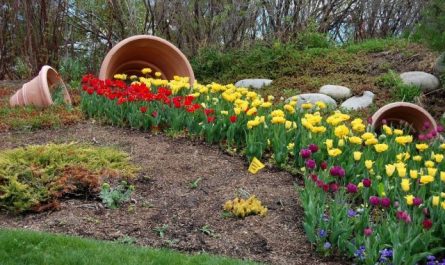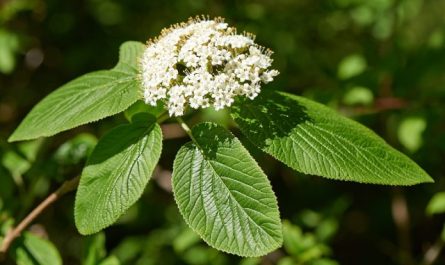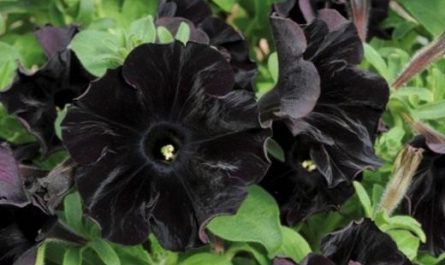I met hyssop at the popular exhibition “City-garden”, where it was a star, being the basis of many compositions, and bought several bushes for a mixborder. Unfortunately, hyssop is still rarely found in private gardens in our country, although in terms of decorativeness it is in no way inferior to lavender and sage. In addition, it is a valuable spicy and medicinal plant. Let’s get to know it better!

Description of the plant
Hyssop officinalis (Hyssopus officinalis) is a semi-evergreen perennial plant that grows up to 60 cm in width and from 30 to 60 cm in height. It belongs to the Lamiaceae family. In the wild, its habitat is Southern and Eastern Europe, the Middle East and the Caspian Sea coast.
Hyssop blooms with whorls of fragrant white, pink, purple or dark blue flowers about one centimeter in size (depending on the variety), collected in a spike-shaped inflorescence, like sage and lavender. Most often, violet-blue or white flowers are found. In shape, they are two-lipped, tubular, with protruding expressive stamens. Hyssop blooms very abundantly from mid-summer to late autumn. The plant has compact bushes and erect stems covered with opposite, narrow, fragrant, dark green leaves (up to 3 cm in length).
The genus name “hyssop” comes from the classic name of this spicy herb, borrowed from the Semitic name of the plant “esob”. Hyssop officinalis is grown as a spicy-aromatic, medicinal and ornamental plant, and is also valued by beekeepers as an excellent honey plant.

Growing Hyssop
Hyssop grows best in full sun, but tolerates light shade in the midday heat. Like other Mediterranean herbs, hyssop likes a warm spot and well-drained, alkaline soil. Hyssop will thrive in fertile loamy soil, but will do well in a variety of other soil types, including dry, sandy soils. However, it is recommended to add well-rotted compost to the planting hole when planting.
Hyssop should not be overwatered; the top layer of soil should be allowed to dry out between waterings. Once the plant has taken root in a new location, hyssop tolerates drought well. It is not necessary to feed the plant on fertile soils, but hyssop responds well to watering with compost tea or diluted fish emulsion a couple of times during the growing season.
Hyssop officinalis is a completely winter-hardy plant in zone 3 (hardy to -35 °C), it does not need winter protection. In late autumn, cut the plant almost to the ground, and in regions with very harsh winters, put a few centimeters of mulch near the plant.
This is a very hardy plant and rarely gets sick or is attacked by pests, but it is sometimes bothered by scale insects and nematodes. Scale insects can be removed by hand and crushed. And you can repel nematodes by planting marigolds nearby. Hyssop can be susceptible to root rot in damp soil, so it is important to ensure that the soil is well drained.
Removing faded hyssop flowers will help extend the flowering period and stimulate the growth of the bushes. In southern regions, plants are cut back by half in early spring or late autumn, which will promote more abundant flowering in the second year.
Hyssop should be divided every three to four years, otherwise the plantings will become sparse. After 5 years without division, the plant loses its viability. In this case, old bushes should be replaced with new plants grown from cuttings or divisions.

Hyssop Reproduction
Hyssop officinalis can be grown from seeds, propagated by dividing the bush or stem cuttings. It is very easy to grow hyssop from seeds, and the plant easily self-sows. Seeds can be sown in open ground after the last spring frosts. Seeds can also be sown in the ground in the fall.
For seedlings to bloom earlier, hyssop seeds can be sown indoors in early spring or a week before the last spring frost. Germination of hyssop seeds takes about 14 days. Sow the seeds to a depth of 0,5 cm, after which the containers are placed on a bright window. On cloudy days, the seedlings may require additional lighting with a phytolamp. Planting in the ground is carried out in May. With early sowing, hyssop will bloom in the first year.
Young plants can be obtained from 15 cm long cuttings. Dip the cuttings in rooting hormone and stick them in small cups with fertile, well-drained soil. A sign of good rooting is the growth of new shoots.
Plant division is carried out in spring or autumn. Young hyssop divisions are planted at the same depth at which they grew. Bushes are planted at a distance of 30 to 50 cm from each other.
Medicinal properties of hyssop
Hyssop is believed to have anti-inflammatory, antimicrobial, antioxidant, and mood-boosting properties. In southern Europe and the Middle East, hyssop has traditionally been used for medicinal purposes. In ancient times, the herb was used to treat a variety of ailments, from lice to shortness of breath. Today, herbalists recommend hyssop tea to relieve respiratory infections and sore throats. Externally, it can be used as a poultice or compress. The herb has astringent properties and can be used for bruises, wounds, and cuts.
To make hyssop tea, pour one tablespoon of dried flowers (or three tablespoons of fresh flowers) into a glass of boiling water. Infuse the flowers in a closed container for 10 minutes. Strain, then add a little lemon and honey to taste. This tea can be useful for stomach problems and colds. However, hyssop should not be used during pregnancy, and in any case, it is better to consult a doctor before taking it internally.

Hyssop in cooking
A close relative of mint, hyssop has distinctly scented leaves. Some find its scent sweet, others say it is fresh and aromatic, and still others find hyssop’s scent similar to camphor.
The tips of the shoots and young leaves of hyssop can be used raw or cooked as a flavoring for salads, soups, stews, casseroles, stuffing, poultry dishes, or roasts. Chefs often add hyssop to fruit salads, especially those that contain cranberries. Hyssop is most often used in meat or fatty fish dishes, as it is believed to help digest fatty and heavy foods. Hyssop is also used as a flavoring in alcoholic beverages.
This plant has a strong minty flavor that can become bitter if too much hyssop is used in a dish.
Hyssop in landscape design
This is one of the wonderful drought-resistant plants that do not require special care. It has beautiful dark green foliage and a compact, dense bush. The colorful inflorescences of hyssop are extremely attractive to bees and various butterflies. Hyssop grows at a medium rate and can work well in a variety of conditions.
It is most often planted in herb beds in the ornamental garden, along with other Mediterranean herbs such as lavender, rosemary and thyme. It can be used to attract pollinators in the garden or as a companion plant in vegetable gardens. It also makes a great border plant as a hedge to frame beds or to separate different areas of the garden.
Hyssop can also serve as a frame for a group of fruit trees on the south side, or to line conifers. The compact form of this plant will add softness, giving the plantings a neat and orderly appearance.
Hyssop looks beautiful in natural mixed borders, combining with white, yellow, red and orange flowers, as well as with plants that have silvery foliage. Try planting it next to pyrethrum, California poppy, calendula, yarrow, nasturtium, lupine, sedum, perovskia or catnip.
When planted relatively densely, hyssop can create a good ground cover in dry areas to protect the soil from drying out and the growth of weeds.



What are the benefits of hyssop in the garden?
Another interesting feature of hyssop is that, like other aromatic herbs, it can also repel, distract or confuse a number of pests, including repelling cruciferous flea beetles.
One example of this is the fact that hyssop can be used as a trap for cabbage butterflies. When hyssop is grown elsewhere in the garden (away from the cabbage beds), the butterflies can lay their eggs preferentially on it. This can therefore help keep the cabbages safe.
Hyssop can be a great companion plant for fruit trees and a variety of other plants. Any plant that requires insect pollination will benefit from having hyssop nearby. It can also attract predatory insects that eat aphids and other common pests. Fresh hyssop, brewed as a tea and sprayed on plants, can help combat bacterial diseases.
In addition, there is an opinion that hyssop increases the yield of grapevines. But there is an observation that radishes suffer if planted next to hyssop.




















